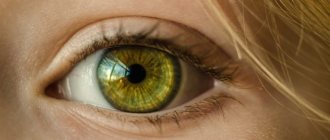Article:
Of course, all loving parents care about the health of their children.
However, often mothers and fathers pay attention exclusively to the physical development of the child, for some reason without paying due care to the emotional state of the baby. But emotions play a significant role in a person’s life. Emotions appear from the first days of a baby’s life; with their help, the child communicates with his parents, making it clear that he is upset, in pain, or feels good. As the child develops, his emotions also undergo changes and it is important to prevent emotional disturbances in children during this period. The baby learns not only to speak, walk or run, but also to feel. From the simple emotions that he experiences in infancy, he moves on to a more complex sensory perception, and begins to get acquainted with the entire emotional palette.
As a child gets older, he not only tells his parents that he is feeling uncomfortable because he is hungry or has a stomach ache, but he also begins to show more complex emotions.
Like an adult, a baby learns to be happy, delighted, sad, surprised or angry. True, the main difference between a five-year-old child and a one-year-old baby is not only that he knows how to feel “widely,” but also that he knows how to control his emotions.
In modern society, experts are increasingly trying to draw attention to such a serious problem as emotional disorders in children.
Emotionally volitional disorders in children.
The formation of the emotional-volitional sphere is one of the most important conditions for the formation of a child’s personality, whose experience is continuously enriched. The development of the emotional sphere is facilitated by family, school and life, which surrounds and constantly influences the child. Emotions play a significant role from the very beginning of a baby’s life, serve as an indicator of his relationship with his parents, and help him learn and respond to the world around him. Currently, along with general health problems in children, experts note with concern the increase in emotional-volitional disorders, which result in more serious problems in the form of low social adaptation, a tendency to antisocial behavior, and learning difficulties.
Spectrum of disorders of will and emotions
Emotional volitional disorders include:
- hyperbulia;
- hypobulia;
- abulia;
- obsessive-compulsive disorder.
With a general increase in will, hyperbulia develops, which can affect all major drives.
This manifestation is considered characteristic of manic syndrome. So, for example, a person’s appetite will increase; if he is in a department, he will immediately eat the food that is brought to him. Both will and drive decrease with hypobulia. In this case, the person does not need communication; he is burdened by strangers who are nearby. He feels better alone. Such patients prefer to immerse themselves in their own world of suffering. They do not want to take care of their relatives.
When a decrease in will occurs, this indicates abulia. Such a disorder is considered persistent, and together with apathy it is composed of an apathetic-abulic syndrome, which, as a rule, manifests itself during the final state of schizophrenia.
With obsessive drive, the patient has desires that he is able to control. But when he begins to renounce his desires, this gives rise to serious anxiety in him. He is haunted by thoughts of a need that has not been satisfied. For example, if a person has a fear of pollution, he will try not to wash his hands as often as he would like, but this will make him painfully think about his own need. And when no one is looking at him, he will wash them thoroughly.
Stronger feelings include compulsive attraction. It is so strong that it is compared to instincts. The need becomes pathological. Her position is dominant, so the internal struggle stops very quickly and the person immediately satisfies his desire. This may be a grossly antisocial act that will result in punishment.
Aggression in children.
Let's talk about the most common sign of this disorder - aggression in a child, let's look at it in detail: The cause of aggression in children. Where does a child's aggression come from? Signs of aggression in children. How is aggression treated in children? Manifestations of aggression can be in the form of demonstrative disobedience to adults, physical aggression and verbal aggression. Also, his aggression can be directed at himself; he can hurt himself, but more often his peers. The child becomes disobedient and with great difficulty succumbs to the educational influences of adults. Aggression in a child is expressed in poor self-control and lack of awareness of one’s actions. Children's aggression can be controllable and uncontrollable. Uncontrolled aggressiveness is harmful, just like uncontrollable fear, uncontrollable delight and any other uncontrollable emotion. Aggression is not appropriate in relationships between relatives and friends at school, except for comic aggressiveness, when aggressiveness is a game, both parties are interested in such a game, perceive it only as a game and enjoy it, accordingly, there is no physical violence in it. A child may repel others with remarks expressing contempt or impatience, or insolence, but most often there is hard tactile contact. Increased aggressiveness in children is one of the most pressing problems not only for doctors, teachers and psychologists, but also for society as a whole. The main distinguishing feature of aggressive children is their attitude towards their peers. Aggression in children is perhaps the most important problem, since the number of children with such behavior is growing rapidly from year to year.
Signs of aggression in children
A child can feel his emotions, but he is not always able to recognize them and understand the reasons for his behavior. But as a rule, parents notice too late that something is happening to their child. Often, signs of aggression in children are the actions they perform:
- They are hysterical, often for show.
- They don't admit their mistakes.
- They pinch.
- They are angry.
- They call names.
- They take away the toys. .
- They refuse to carry out orders.
- They get angry (stomping their feet and banging their hands).
- Spit
- They use offensive words.
- They beat their peers
- They swing at others.
- They are taking revenge.
If in a family parents suppress the child in every possible way when raising a child, the child simply begins to hide his feelings. But as we can guess, they don’t go anywhere, but accumulate like a snow globe and in the near future an “explosion of emotions” occurs. An aggressive child is often driven by fear. Such a child is either afraid to be left alone, he thinks that no one can love him, no one will invite him for a walk, etc. All children want to be interested in them, to be invited to any events, to be spoken with kind words. The same is desired by a child who simply does not yet understand that aggression pushes people away from him even more. Accordingly, if parents do not reach out to a child who shows aggression and anger, then he may think about what else to do to make his parents love him again.
Classification of affective disorders
1) Single depressive episode 2) Single manic episode 3) Bipolar affective disorder 4) Recurrent depressive disorder 5) Chronic mood disorders
— Cyclothymia — Dysthymia
6) Anxiety disorders
— Panic disorder — Generalized anxiety disorder — Agoraphobia — Social phobias — Specific (isolated) phobias
7) Somatoform disorders  Stress disorders 9) Age-related emotional spectrum disorders
Stress disorders 9) Age-related emotional spectrum disorders
Single depressive episode (F32)
Most often, a depressive episode develops between the ages of 20 and 40 and lasts at least 2 weeks. This is facilitated by factors such as a decrease in social level, divorce in men, the postpartum period in single mothers, death of relatives, family history of suicide, personal qualities (conscientiousness, anxiety and diligence), homosexuality, problems of sexual satisfaction, and other stressful events. In addition to genetic predisposition, the loss of social contacts and the cultivation of helplessness in the family during periods of stress play a significant role in the occurrence of depression.
Patients' mood and energy levels decrease, and their thinking slows down. They have difficulty remembering and focusing their attention on something, which leads to poor performance in school and work. This is especially noticeable among schoolchildren in puberty and among middle-aged people engaged in intellectual work. Physical activity also changes towards inhibition (up to stupor). Sometimes this behavior is perceived as laziness. Children and adolescents in a state of depression can be aggressive and conflictual.
Self-confidence and self-esteem decrease. These sensations cause the patient to distance himself from loved ones and increase his feelings of inferiority. Ideas of guilt and self-deprecation appear, the world around us is perceived in cold and gloomy tones, time drags on excessively long and painfully. The patient stops paying attention to himself. He is worried about various senestopathic and hypochondriacal experiences. As a result, ideas and actions arise related to auto-aggression: self-harm and suicide.
Suicide is a dangerous consequence of depression
According to psychiatrists, about 80% of patients suffering from depression have thought about committing suicide. About a quarter of them make at least one suicide attempt during a depressive episode, and in 15% it ends in suicide. A suicide attempt in psychiatry is equivalent to a myocardial infarction in cardiology: the patient necessarily requires urgent hospitalization in a specialized institution. If a person who decided to commit suicide failed to complete his plan, this does not mean that the danger to his life has passed.
Throughout the entire period when the patient is depressed, the risk of attempting suicide is too great. That is why, during the entire period of treatment for depression, until the depressive episode completely disappears, the patient should be in a place where the possibility of re-committing suicide is minimized. This can only be achieved in a hospital setting. Mandatory supervision of the patient is also necessary immediately after his discharge from a specialized institution, especially in cases where the patient still has thoughts of suicide.
Single manic episode (F30)
A single manic episode usually manifests itself as increased mood, faster thinking, and psychomotor agitation. Patients smile, do not complain about anything, and consider themselves absolutely healthy. They are optimistic, disdainful of difficulties and deny all possible problems. Their speech is fast, galloping, and with severe mania resembles “verbal okroshka.” Patients overestimate their own abilities, consider themselves attractive, and are constantly praised for their supposed talents.
They pay a lot of attention to their appearance, very often decorating themselves with medals and various badges. Women use excessively bright cosmetics and try to emphasize their own sexuality with the help of clothes. They waste money by purchasing useless goods. Such patients are active and fussy. They need very little time to recuperate. Despite the fact that patients cause a lot of inconvenience to others, they do not pose any threat to the health and lives of other people.
Classification of manic episodes
Depending on the severity, a manic episode manifests itself in the form of hypomania, mania without psychotic symptoms, and mania with psychotic symptoms. Hypomania (F30.0) is a mild mania characterized by prolonged severe changes in mood and behavior. It is not accompanied by delusions and hallucinations.
With mania without psychotic symptoms (F30.1), the patient's social behavior changes, which manifests itself in inappropriate actions. There are no psychotic symptoms. Mania with psychotic symptoms (F30.2) is a severe mania characterized by manic agitation and violent racing of ideas. In the clinic, secondary delusional ideas of greatness, high origin, value, hypereroticism appear, and hallucinatory calls or “voices” are possible.
Bipolar affective disorder (F31)
Previously, bipolar affective disorder was classified as manic-depressive psychosis. This pathology is characterized by repeated (more than two) episodes, during which mood and motor activity are significantly disturbed (from depressive retardation to manic hyperactivity). Exogenous factors usually do not have a significant effect on rhythm.
Attacks have some seasonality, most often exacerbations are observed in spring and autumn, although individual rhythms also occur. Manic states last from one to four months, the duration of depression ranges from one month to six months. The duration of intermissions in most cases ranges from six months to 2-3 years. As the pathology progresses, social decline is possible.
Recurrent depression (F33)
Recurrent depression is characterized by repeated depressive episodes of varying severity (mild, moderate or severe). The interictal period lasts more than two months. During this time there are no significant affective symptoms. The episode usually lasts from 3 months to 1 year. More often observed in women. Bouts of depression usually become longer in later life. A seasonal or individual rhythm is quite clearly visible. Clinical manifestations of recurrent depression are similar to endogenous depression. Additional stress has a significant impact on the severity of the disease.
Chronic mood disorders (F34)
These mental disorders are usually chronic and unstable. Each episode is not deep enough to be classified as hypomania or mild depression. Chronic mood disorders have been observed for years. Sometimes they last throughout the patient's life. Very often they can be aggravated by various life events, as well as stress. There are cyclothymia, dysthymia and other chronic affective disorders.
Cyclothymia (F34.0)
Cyclothymia is said to occur when there is seasonal mood swings for at least two years. In this case, alternating periods of subdepression and hypomania are observed; intermediate periods of normal mood may or may not be present. Affective episodes with cyclothymia are relatively mild. Moderate and severe forms of affective episodes are always absent. Episodes of “excessive fun” are possible; most often they occur after the abuse of alcoholic beverages.
Dysthymia (F34.1)
Dysthymia occurs in people belonging to the constitutionally depressed personality type. Patients suffering from this pathology are pessimistic, tearful, thoughtful, and uncommunicative. Depressive mood persists for at least 2 years. It can be permanent or periodic. The duration of normal mood rarely exceeds several weeks. With dysthymia, the level of depression is usually lower than with mild recurrent disorder.
Other chronic mood disorders (F34.8)
This category includes chronic mood disorders that are not of sufficient severity or duration to meet the criteria for dysthymia or cyclothymia. They also cannot be classified as a mild or moderate depressive episode. In addition, this includes some types of depression, which are closely related to stress.
Anxiety disorders
The following pathologies are usually classified as anxiety disorders: panic disorder, generalized anxiety disorder, social phobia, agoraphobia, isolated phobias, and disorders caused by mental stress.
Panic disorder (F41.0)
Panic disorder (panic attacks) occurs, as a rule, at the age of 20-25 and is characterized by the occurrence of panic attacks of horror, not associated with any external stimuli (they are assessed as “bolt from the blue”). The duration of attacks ranges from 5 minutes to half an hour. The horror during panic attacks can be so strong that patients do not understand where they are and who they are. Patients are afraid of going crazy, afraid of suffocating and dying, so they often try to escape.
Some make attempts to prevent the onset of attacks with the help of various psychotropic drugs and alcoholic beverages. Typically, panic attacks occur in situations where a person has limited freedom of movement or when, in his opinion, there is nowhere to wait for help. With constant stress, the frequency of attacks increases. In about a third of patients, attacks occur during sleep. This is due to an increase in carbon dioxide levels in the blood.
Generalized anxiety disorder (F41.1)
The main feature of generalized anxiety disorder is excessive, long-lasting anxiety, constantly supported by worry and anxious expectations. Concerns arise for various reasons that are not related to each other. As a rule, patients suffering from this disorder are aware of the excessiveness of their anxiety and the inability to cope with this disorder on their own. At the same time, they believe that this is exactly how it should be.
Social phobias (F40.1)
Social phobias are an unmotivated fear of performing public actions (for example, speaking in public), actions that are accompanied by attention from strangers, or simply communicating with strangers, as well as people of the opposite sex. The main experience in patients suffering from social phobia is the fear of being the center of attention, in an awkward or humiliating position.
Agoraphobia (F40.0)
The term “agoraphobia” refers not only to the fear of open spaces, but also of any situations in which the patient feels lonely, from which it is impossible to quickly get out and return to a safe place. It usually develops in patients suffering from panic disorder or those who have had sporadic panic attacks in the past. Those suffering from agoraphobia try to always stay at home, avoid crowds, any trips and do not dare to leave the house without the accompaniment of someone close to them.
Specific (isolated) phobias (F40.2)
Anxiety attacks with a specific phobia develop as a result of contact with certain situations or objects specific to each patient. The most common irritants are insects and animals (spiders, mice, etc.), natural phenomena such as hurricanes, thunderstorms, etc., the sight of blood, as well as various circumstances (a trip in an elevator, a flight on an airplane, etc.)
Somatoform disorders (F45)
This group of disorders is characterized by the presence of recurrent physical signs of various diseases with constant requirements for detailed medical examinations. However, additional studies have negative results, and doctors issue a conclusion that there is no physical basis for the existing complaints. Patients behave hysterically, try to attract attention, and are indignant at the inability to convince medical workers of the physical nature of their illness and the need for further examinations and examinations.
Stress disorders (F43)
This group includes disorders that arose as a result of the obvious influence of provoking factors. These factors include acute severe stress or prolonged trauma. Prolonged unpleasant circumstances or stressful events are the primary or predominant cause, without which the disorder could not have arisen.
Age-related emotional spectrum disorders
Mood disorders can occur at different stages of a person's life course. In women, in this regard, the critical age is considered to be the period of puberty, the postpartum period, and the menopause. In men, the risk of developing emotional disorders increases during adolescence, at the age of 20-30 years and after 40-50 years.
Treatment of mood disorders
Therapy for all emotional disorders includes treatment of depression and mania itself, as well as preventive measures. Treatment of affective disorders is carried out in three relatively independent stages. Stage one is the relief of acute affective symptoms. It consists of eliminating acute signs of disturbance in the emotional sphere and lasts until clinical or therapeutic remission is established. The second stage is stabilizing therapy. Its goal is the follow-up treatment of residual symptoms, the fight against emotional instability, early relapse and pre-relapse disorders. The third stage is preventive therapy. The task of this stage is to prevent the development of relapses of the pathology. Carried out on an outpatient basis.
Treatment for depression includes the use of a wide range of drugs depending on the depth of the disorder. For this purpose, fluoxetine, mianserin, Zoloft, lerivon, as well as tricyclic antidepressants and ECT are used. In addition, photon therapy and sleep deprivation treatment are used. Treatment of mania is carried out with increasing doses of lithium under strict control of their blood levels, antipsychotics or carbamazepines, and sometimes beta blockers. Lithium carbonate, sodium valproate or carbamazepine are used as maintenance therapy.
Treatment of anxiety-phobic disorders
Therapy for anxiety-phobic disorders consists of medication and psychotherapy. Drug treatment consists of the use of tranquilizers (phenazepam, mebicar), antidepressants (imipramine), nootropics, and MAO inhibitors. Psychotherapy includes psychoanalysis, as well as behavioral therapy methods: desensitization, hypnosis, auto-training, Gestalt therapy, neurolinguistic programming, etc.
Advice for relatives of someone suffering from mood disorders
Affective disorders are serious disorders that require specialist intervention. This is especially true for depression, which in most cases is accompanied by suicide attempts. Anyone thinking or talking about suicide needs immediate mental health care. It is important to know that the risk of committing suicide is highest in the initial stage of the disease. It follows from this that the earlier an affective disorder is diagnosed and effective methods of its treatment are determined, the less likely it is that a loved one will die as a result of suicide. If someone in your family suffers from depression or another emotional disorder, contact a psychiatrist and ask for help. Support your loved one both during the visit to the doctor and throughout all stages of treatment. Make sure that he takes prescribed medications on time and follows all medical recommendations.
We also recommend reading the article about prenatal depression.
Fears
One of the most common reasons why parents turn to a psychologist is the presence of constant intense fears in children. Fear is the fear of something specific. At every age, normative fears are observed, which appear gradually, as a result of the development of the intellectual sphere, imagination, etc. Every child (and adults too) has certain fears. A.I. Zakharov identified them as age-related, i.e. those that accompany the child during a certain period of development. During the transition from one period of development to another in a healthy child, some fears disappear, while others appear. If this does not happen, then anxious and suspicious traits may appear in the character of an already adult person, which will hinder his development.
Thus, if the fears are close to what a baby might be afraid of at his age, then there is no reason to worry. If there are a lot of fears, then you should pay special attention to this child. The presence of numerous fears is a sign of insufficient self-confidence and lack of adequate psychological protection, which all together adversely affects the child’s well-being, creating even greater difficulties in communicating with peers. Our task is to “remove” from the child’s psyche those fears that are already causing harm, reflected in behavior by fearfulness. Fear has one weak point: until the fear is named and told, it seems huge and unbearable to a small person, but as soon as you name the fear out loud, put it into words, it loses almost half of its significance. Parents need to understand that fear indicates the existence of a problem, tension in the little person and, most likely, this cannot be dealt with without professional help.
Working with fears is aimed at:
- establishing the cause of the child’s anxiety;
- relieving emotional stress, developing communication skills;
- developing skills to overcome conflict situations.
Sand is an invaluable assistant in the first stage of working with fears. A small child cannot yet explain what is the cause of his internal anxiety. An older preschooler or younger schoolchild is often uncomfortable admitting that he is afraid of something (“I’m already big...”). By building a sand country and telling stories about its inhabitants, a psychologist can easily determine the cause of a child’s anxiety. And then a fairy tale comes to the rescue, which not only activates imagination, develops memory, enriches vocabulary, but is also a wonderful assistant for a child’s self-expression. After all, every hero of a fairy tale - well known and loved from early childhood - can tell his own story, the story of what happened to him, what he experienced. A fairy tale helps a child calm down, relieve emotional stress, and develop skills to overcome a conflict situation.
Another way to overcome fears is to depict it. Under the guidance of a psychologist, specifying fears will help the child get rid of uncertainty and spill out what worries and torments.
Anxiety
Anxiety is an individual psychological feature that consists of an increased tendency to experience anxiety in a wide variety of life situations, including those that do not encourage this.
It is necessary to distinguish anxiety from anxiety. If anxiety is an episodic manifestation of a child’s restlessness and excitement, then anxiety is a stable state. For example, a child sometimes gets excited before performing at a party - this is anxiety. If anxiety manifests itself constantly, then we can talk about anxiety.
Many psychologists believe that anxiety develops due to the presence of an internal conflict in a child, which can be caused by:
- conflicting demands made by parents, or parents and kindergarten (school);
- inadequate demands (most often excessive);
- negative demands that humiliate the child and put him in a dependent position.
A child’s anxiety largely depends on the level of anxiety of the adults around him. The authoritarian style of parental education in the family also does not contribute to the child’s inner peace.
Anxious children try to keep their problems to themselves. They are characterized by excessive anxiety, and sometimes they are afraid not of the event itself, but of its premonition. They often expect the worst. Children feel helpless and are afraid to play new games and start new activities. They have high demands on themselves and are very self-critical. Their level of self-esteem is low; such children really think that they are worse than others in everything, that they are the ugliest, stupidest, and clumsy.
Working with an anxious child usually takes a long time and is aimed at:
- increased self-esteem;
- teaching the child the ability to manage himself in specific, most worrying situations;
- to relieve muscle tension.
Since anxious children, as a rule, do not openly communicate their problems, it is extremely difficult to identify what is actually bothering the child. In solving this problem, building a sand picture will help, which does not require special skills from the baby, but is simply a game - a natural activity for this age. As a result, the child does not have the feeling that he did something wrong (there is no tension), and the psychologist receives the necessary information about the internal state of the little client. After establishing contact in the sandbox, situations that worry the baby are played out with the help of various figures. In this way, constructive ways of responding are developed, which are then reinforced in real life.
Working with clay allows you to relax, thereby helping to relieve muscle tension. Children who need to improve their self-esteem gain an extraordinary sense of “I” from using this material. This type of creativity is a good way to stimulate verbal expression of feelings in anxious children, who sometimes lack such abilities.
An equally effective way to solve the problem of child anxiety is fairytale therapy. The child, identifying himself with the hero of the fairy tale, as a result of playing his image, learns to resolve the conflict, acquiring new opportunities and abilities for himself.









